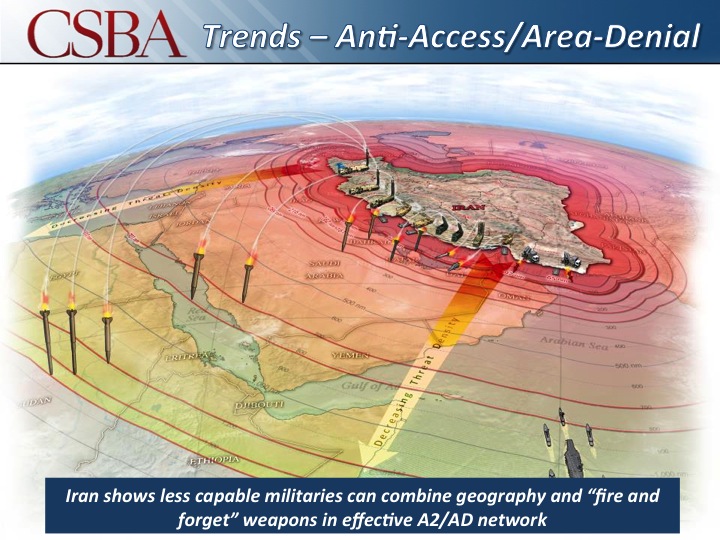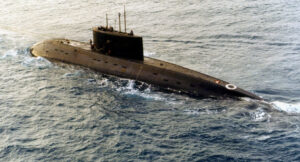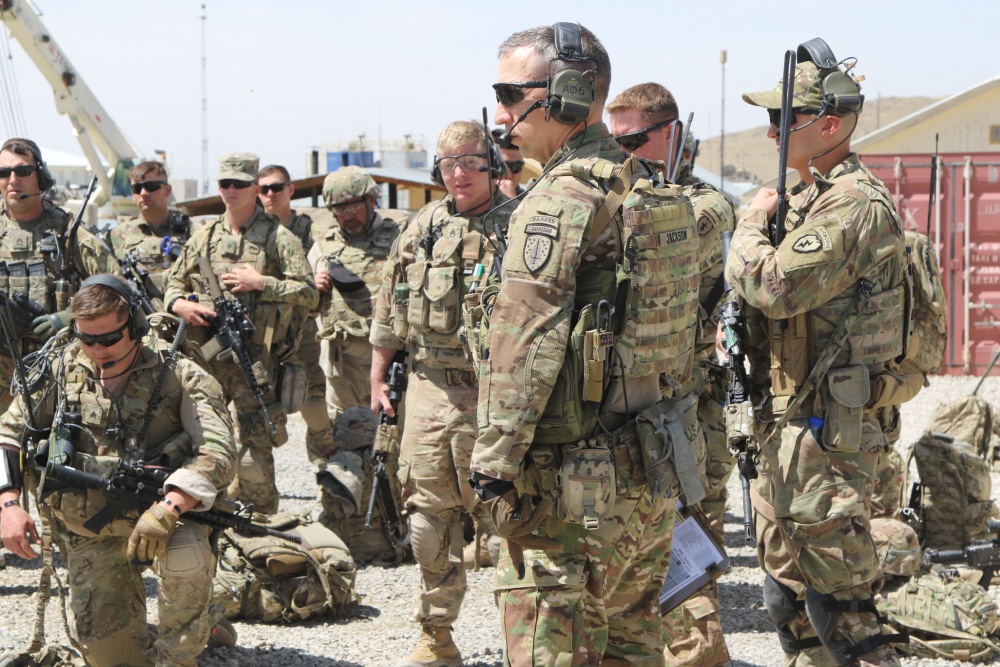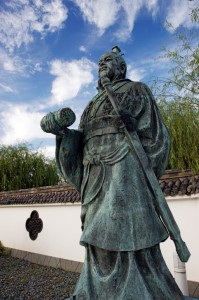Army Can Manage Both Mideast & Great Powers: Sec. Esper
Posted on
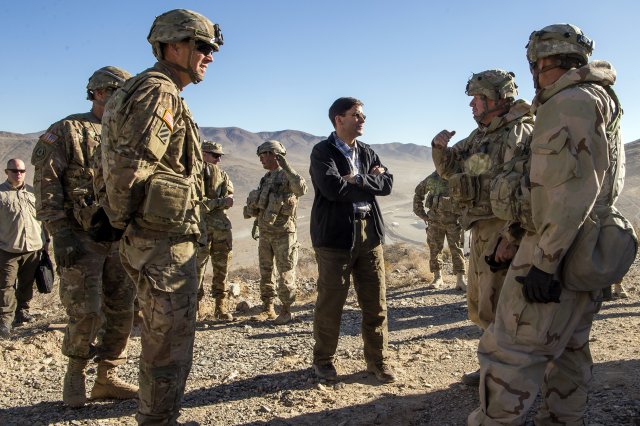
Army Secretary Mark Esper speaks to soldiers at the National Training Center on Fort Irwin, California
WASHINGTON: Modernizing the Army to counter Russia and China will also make it more capable against regional powers like Iran that use similar tactics and technology, Army Secretary Mark Esper said Friday, the first time the service’s top civilian has made this argument.
On the flip side, Esper said, the service’s irregular warfare experience in the Mideast has helped prepare the service for Russian and Chinese proxy warfare, propaganda, and other “grey zone” tactics, where the crucial battlefield is not physical but the hearts and minds of the civilian population.
While we’ve heard bits and pieces of this argument for the Army’s relevance from lower-ranking officials, we’ve never heard it from such a senior official. Esper has made himself the Army’s cheerleader-in-chief for its ambitious, risky, and controversial modernization drive, which some critics fear focuses on expensive systems for a catastrophic but unlikely conflict at the expense of less dire but more probable threats such as COIN.
“We’ve got to be able to do it all, but our primary focus, priority No. 1, is preparing for high-intensity conflict,” Esper told reporters after remarks to the Atlantic Council here. “We can do it all. It’s just managing the force, managing the risk.”
After weeks of rising tensions with Iran, and with the faltering of a US-backed revolt in Venezuela a recent memory, Esper’s standard pitch about modernizing the Army for great-power conflict sparked some understandable questions. In the near term, how can the Army cover that many fronts at once? In the longer term, how can the Army rebuild itself to face the biggest, highest-tech threats without losing focus on regional powers, terrorists, and guerrillas? After all, that’s exactly what happened after Vietnam, when the Army successfully reinvented itself for regular war — deterring the Soviets and then steamrolling Iraq — but willfully forgot what it had learned about counterinsurgency.
Esper acknowledged the dichotomy but said it is a bridgeable divide. Yes, Russia and China have the most advanced and densely layered defenses of long-range precision missiles, but Iran and North Korea are building their own smaller, less sophisticated Anti-Access/Area Denial (A2/AD) systems. Conversely, Iran and North Korea try to avoid head-on military confrontation by sponsoring terrorists, working with criminal networks and staging cyber attacks against soft civilian targets — but Russia and China also use such grey zone tactics as their first resort, with their conventional firepower as a backstop. (This combination of regular and irregular forces is what theorists call hybrid war.)
So the Army’s Big Six modernization priorities, notably ultra-long-range artillery, more survivable air and ground vehicles, and improved air and missile defense, apply to both great-power and regional threats. The counterinsurgency skills learned in Afghanistan and Iraq are likewise relevant across the spectrum. And the Army’s emerging concept of Multi-Domain Operations has evolved from a focus on direct combat to a wider view that places equal importance on competition short of outright war.
“Russia and China, we think that is the most dangerous threat,” Esper told reporters, “but also if you look around the world… look at North Korea, look at Iran in many ways — we find that in many cases they are using equipment produced by a Russia or a China, they are employing the tactics developed by a Russia or a China, so in many ways the force we intend to build will be well-prepared to deal with a conflicts… against an Iran or some other less than near-peer threat.”
“The National Defense Strategy tells us to put our primary focus on high-intensity conflict but it also tells us to be ready to perform a range of irregular warfare activities,” Esper reminded reporters. “So that’s why we will maintain SFABs” — the Army’s recently created Security Force Assistance Brigades — “that’s why we of course will have Special Forces” — whose primary mission has always been advising irregular forces rather than kicking down doors — “[and] that’s why we will continue to study and train on peacekeeping and stability operations.”
Advisor Brigades
The second Security Force Assistance Brigade deployed to Afghanistan this June, following on what Esper described as a successful tour by the first-ever SFAB. (Of course, however well individual units may perform, the state of the war in Afghanistan overall leaves much to be desired). “I was able to go last June [to Afghanistan to visit] 1st SFAB,” Esper said. “They were doing very well, but there were lessons learned, so I want to go back and see if we’ve fully incorporated the lessons from the 1st SFAB and then see what the 2nd SFAB is doing.”
Even the advisor brigades have a dual purpose. While primarily designed to advise friendly militaries for counterinsurgency missions, able both to concentrate on advisor skills and to free regular brigade combat teams to train for conventional conflict, SFABs also serve as cadres for mass mobilization if a war expands beyond what the regular Army, reserves, and National Guard combined can cope with. That’s because each SFAB consists of a cadre of experienced officers and NCOs with relatively few junior troops. That makes sense for a force of advisors — you don’t send a buck private to tell an Afghan captain what to do — but it also means they are effectively instant infantry brigades — just add privates.
With the Army planning to create six advisor brigades, are there plans to expand their missions beyond Afghanistan? “In the future we’ve got to see what the needs of the combatant commanders are,” Esper said. “One idea is to pull back [some] of our conventional forces in Africa, for example and replace them with parts of an SFAB.” There is not as yet, he said, a plan to send an SFAB into Syria or Iraq.
Some critics say this kind of irregular warfare — so-called “low intensity conflict” — is what the Army should focus on, because it’s so common and constant around the world. By contrast, wars between great powers are mercifully rare. The US has fought four conventional wars in the 20th century — World War I, World War II, Korea, and Gulf War I — and maybe half a war since, in the initial invasion of Iraq in 2003.
But you can’t judge the effectiveness of a conventional force solely on how often it fights: You also have to consider how well it deters a major war from starting in the first place, which is its primary mission.
“I think the success of the Army of the eighties, the first success, wasn’t the Iraq War, it was deterring conflict against the Soviets,” Esper said. “I think they saw an Army, and an Air Force and Marines and a Navy, so capable that we preserved the peace.”
For the US military — as for Sun Tzu 2,500 years ago — the most successful force is the one that achieves its objectives without ever fighting.
Subscribe to our newsletter
Promotions, new products and sales. Directly to your inbox.


